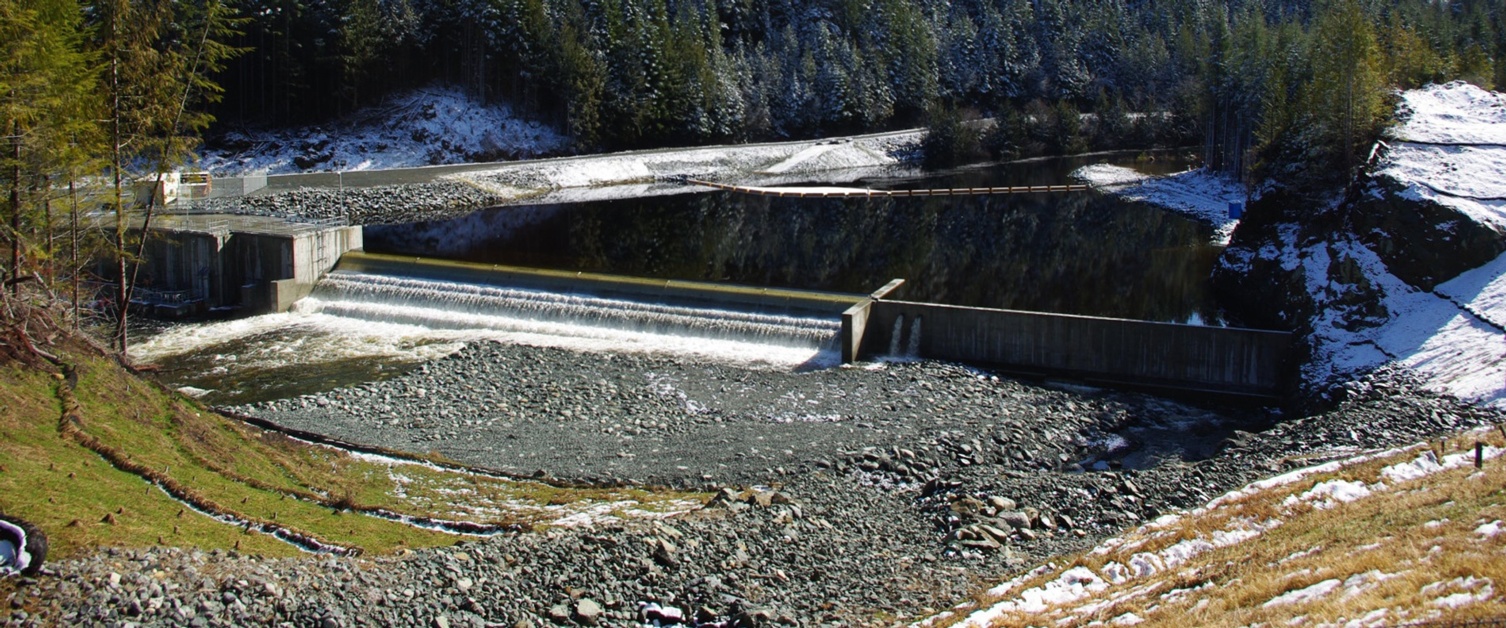
Hydropower
Hydropower provides a clean and renewable source of electricity and an ideal means of reducing greenhouse gas emissions while meeting our energy needs.
Since 1926, we have been pioneers in the hydropower business, with extensive experience in large and small hydroelectric projects throughout the world. Our experience includes water storage, run-of-river, and pumped storage projects.
We cover all aspects of hydropower development, including resource identification and evaluation, financial services, environmental impact assessments, permitting, project management, site investigations, detailed engineering design, site supervision, staffing and training, commissioning, and asset management. The improvement of existing facilities and replacement or upgrade of aging or low efficient equipment are also key elements of our hydropower practice.
Run-of-River Hydropower

Run-of-river hydropower projects use the natural flow and elevation drop of a river to generate electricity. There are no major storage facilities or flooded areas, and run-of-river developments have one of the lowest overall carbon footprints of any renewable energy technology.
We have pioneered the development of run-of-river hydropower facilities, and these developments are one of the most cost-effective renewable energy sources. Our innovative approach to sustainable hydropower development has placed us in the forefront of run-of-river hydro development. Our water basin planning capability allows the consideration of multiple water uses and coordinated operations of multiple hydroelectric run-of-river facilities. We offer a full range of services from project identification, including the use of GIS integrated assessment tools, to permitting, detailed design, and construction supervision. Some of the latest innovations in cost-effective run-of-river hydropower design that have been advanced by Knight Piésold include:
- Coanda screen intakes, including the largest capacity Coanda screen in the world
- Reservoir desanders using inflatable rubber dams, Obermeyer crest gates or similar
- Vortex desander combined with ecological flow release
- Soil restrained penstock design to eliminate expensive concrete anchor blocks
Water Storage

The value of hydropower with water (energy) storage capabilities is becoming more and more valuable as the world continues its move toward a greener economy, with less reliance on fossil fuels and more reliance on renewable energy technologies. The majority of these renewable technologies provide an intermittent energy supply, and hence the need to store energy becomes increasingly important, with storage and pumped storage hydro as some of the most viable and environmentally responsible solutions. We offer all the engineering and environmental services required to complete the full scope of storage hydro facilities, including extensive reservoir and dam design experience with all major dam types, including:
- Concrete faced rockfill dams
- Roller compacted concrete dams
- Asphalt core rockfill dams
- Mass gravity and stepped spillway dams
- Earth embankment dams
- Rockfill masonry concrete dams
- Membrane dams
- Multi-arch concrete dams
Pumped Storage

A pumped storage plant uses two reservoirs, one located at a much higher elevation than the other. During periods of low demand for electricity, such as nights and weekends, energy is stored by reversing the turbines and pumping water from the lower to the upper reservoir. The stored water can later be released to turn the turbines and generate electricity as it flows back into the lower reservoir. Knight Piésold has the capabilities to complete the required 4-quadrant hydraulic transient analyses unique to pumped storage hydro and has developed an in-house GIS-based pumped storage hydro identification and evaluation tool. Our team has the experience and dedication to help you identify opportunities and realize your pumped storage hydro goals in a cost-effective and sustainable manner. Our recent pumped storage experience includes projects and concepts such as:
- Traditional fresh water pumped storage hydro, with new upper and lower reservoirs
- Fresh water pumped storage hydro using existing lower reservoirs or lakes and new upper reservoirs
- Combined inter basin water transfer and pumped storage hydro
- Saltwater pumped storage hydro